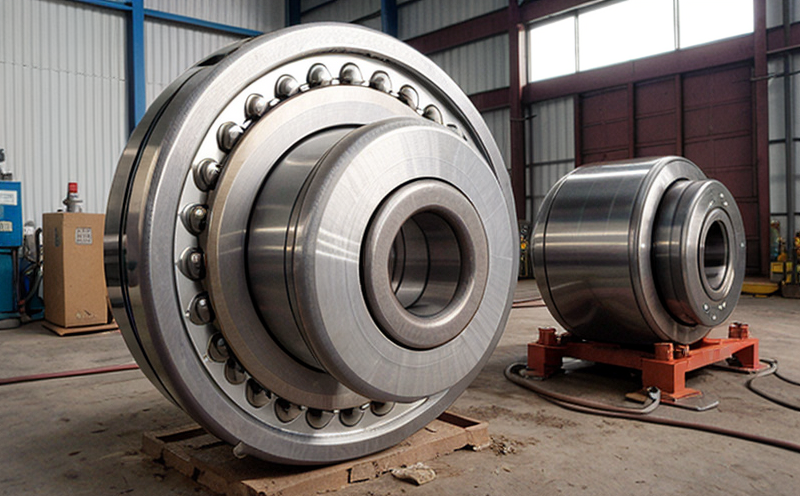Bearing and lubrication system inspection
The inspection of bearing and lubrication systems is a critical component in ensuring the optimal performance and longevity of machinery. This process involves thorough examination of various components to identify any signs of wear, damage, or inefficiency that could lead to operational failures. The primary focus lies on bearings, which are essential for reducing friction between moving parts, as well as the lubrication system that ensures smooth operation by minimizing wear.
Bearings come in different types, including ball bearings and roller bearings, each designed for specific applications depending on load capacity, speed, and environmental conditions. Lubricants play a pivotal role in maintaining these components' health; they not only reduce friction but also protect against corrosion and heat build-up. Proper lubrication can extend the life of bearings by up to 50%, thus making regular inspections indispensable.
During an inspection, several key parameters are assessed using advanced non-destructive testing techniques such as ultrasonic testing or magnetic particle inspection. These methods allow for early detection of potential issues without compromising the integrity of the equipment. Additionally, visual assessments combined with oil analysis provide valuable insights into the condition of bearings and lubricants.
The acceptance criteria for a successful bearing and lubrication system inspection vary based on industry standards like ISO 17932-4 for grease sampling or ASTM E18 for metallography. Compliance with these guidelines ensures consistency across different environments while providing reliability in results. By adhering to stringent quality control measures, laboratories can deliver accurate reports that help maintain optimal performance levels throughout the operational lifecycle of machinery.
Why It Matters
The importance of bearing and lubrication system inspections cannot be overstated when considering equipment reliability and maintenance costs. Regular checks enable proactive rather than reactive approaches to problem-solving, significantly reducing unplanned downtime which can cost businesses millions annually. Moreover, compliance with relevant regulations like OSHA (Occupational Safety & Health Administration) guidelines ensures worker safety by preventing hazardous conditions caused by faulty machinery.
For quality managers and R&D engineers involved in product development or lifecycle management processes, these inspections offer crucial data points that inform decisions regarding design improvements. In terms of compliance officers, ensuring adherence to international standards such as ISO 14001 for environmental management systems is made easier through regular assessments which identify areas needing attention.
Incorporating bearing and lubrication system inspections into procurement strategies helps organizations select suppliers who meet stringent quality requirements. This approach fosters long-term partnerships based on mutual trust and commitment to excellence, ultimately leading to better supply chain performance.
Competitive Advantage and Market Impact
Implementing robust bearing and lubrication system inspection protocols can provide significant competitive advantages in both domestic markets and international arenas. Companies that prioritize preventive maintenance over corrective actions demonstrate their commitment to sustainability, thereby enhancing their brand reputation among environmentally conscious consumers.
By leveraging advanced diagnostic tools during inspections, firms gain deeper insights into how particular operating conditions affect specific components within machines. This knowledge enables them to tailor solutions more precisely, resulting in reduced energy consumption and improved productivity rates compared to competitors relying solely on reactive measures.
Incorporating such practices also facilitates smoother integration of new technologies into existing fleets since data collected during inspections serves as a baseline for comparison against future benchmarks. As markets evolve towards greater emphasis on sustainability and efficiency, being at the forefront of these trends can secure competitive positions over time.
Use Cases and Application Examples
| Application Example | Description |
|---|---|
| Data Centers | Preventive maintenance ensures uninterrupted service availability during critical operations. |
| Aerospace Industry | Ensures stringent safety standards are met for highly sensitive environments. |
| Mining Operations | Minimizes risks associated with heavy machinery in challenging terrains. |
| Automotive Manufacturing Plants | Prolongs lifespan of expensive production line equipment, reducing replacement costs. |
| Oil & Gas Facilities | Avoids catastrophic failures that could lead to environmental disasters or costly shutdowns. |
| Hospital Settings | Maintains critical life support systems without interruption. |
| Construction Sites | Prolongs tool longevity, leading to cost savings and increased efficiency during projects. |
| Logistics Warehouses | Ensures efficient handling of goods with minimal downtime disruptions. |
The examples above illustrate the diverse applications where bearing and lubrication system inspections are crucial. Across all sectors, these inspections contribute to enhancing operational efficiency, ensuring safety standards, and reducing maintenance costs. By integrating regular inspections into routine practices, organizations can achieve maximum value from their investments in heavy machinery.





